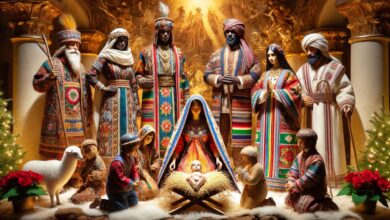The Timeless Beauty of Japanese Traditional Outfits

Japan is a country rich in history, culture, and traditions. One of the most iconic aspects of Japanese culture is its traditional clothing. These outfits, which have evolved over centuries, hold deep cultural significance and are still worn today on special occasions. From the elegant kimono to the practical yukata, Japanese traditional outfits are more than just clothing; they represent artistry, status, and heritage.
The Iconic Kimono – Japan’s Most Famous Attire

The kimono is undoubtedly the most recognized traditional Japanese outfit. It is a long, T-shaped robe with wide sleeves, wrapped around the body and secured with an obi (belt). Kimonos come in various styles, materials, and designs, each suitable for different occasions and seasons. The intricate patterns and vibrant colors of kimono fabrics often symbolize different meanings, such as seasonal changes, prosperity, or social status.
Types of Kimono and Their Significance
- Furisode – A formal kimono with long, flowing sleeves, worn by unmarried women.
- Tomesode – A kimono with shorter sleeves, worn by married women, often adorned with family crests.
- Komon – A casual kimono with small, repeated patterns, suitable for everyday wear.
- Iromuji – A single-colored kimono, often worn at tea ceremonies.
- Uchikake – A heavily embroidered wedding kimono, worn over another kimono.
Kimonos are often paired with elaborate accessories, such as decorative obi belts, intricate kanzashi hairpins, and traditional wooden sandals, making them an artistic expression of beauty and grace.
The Casual and Comfortable Yukata
The yukata is a lightweight, informal cotton kimono worn mainly in the summer. Unlike the formal silk kimono, yukata are easier to wear and are commonly seen at festivals and hot spring resorts. Paired with wooden sandals (geta) and an obi, yukata offer both style and comfort. Japanese traditional outfits like the yukata remain a favorite among young people, especially during seasonal events.
In modern times, yukata have evolved into stylish fashion statements, with bold colors and trendy patterns attracting younger generations. Some fashion designers even incorporate Western influences, creating fusion styles that blend traditional and contemporary elements.
Hakama – The Traditional Pleated Pants

Hakama are pleated skirt-like pants traditionally worn by samurai, scholars, and martial artists. Today, they are still used in martial arts like kendo and aikido and are often part of ceremonial dress for university graduates and shrine maidens (miko). The dignified appearance of hakama represents discipline and respect, values deeply embedded in Japanese culture.
Hakama also hold a special place in Japanese weddings, where brides sometimes wear a hakama-style outfit to pay homage to tradition. Additionally, some school uniforms for girls feature a modernized version of hakama, highlighting its enduring influence in Japanese fashion.
Haori – The Stylish Japanese Jacket
A haori is a short, kimono-style jacket that adds an extra layer of elegance to an outfit. Originally worn by samurai, haori have become popular among both men and women as a stylish addition to traditional and modern attire. In recent years, haori jackets have gained international recognition, with fashion enthusiasts incorporating them into contemporary wardrobes.
Essential Accessories That Complete the Look
Traditional Footwear
- Geta and Zori – Wooden sandals worn with kimono and yukata.
- Tabi – Split-toe socks often worn with sandals.
Ornate Accessories
- Obi – A wide belt used to secure kimonos, tied in elaborate knots.
- Kanzashi – Decorative hairpins used in traditional hairstyles.
Accessories play a crucial role in enhancing the beauty of Japanese traditional outfits. From delicately embroidered handbags to silk fans, every element adds to the overall aesthetic of the ensemble.
Modern Adaptations and the Revival of Japanese Traditional Outfits

While Western clothing dominates daily life in Japan, Japanese traditional outfits remain popular for ceremonies, weddings, tea ceremonies, and festivals. Many designers are incorporating traditional elements into modern fashion, ensuring these beautiful garments remain relevant in contemporary times. The global fashion industry has also embraced Japanese attire, with kimono-inspired clothing appearing in major fashion shows and streetwear trends.
Additionally, efforts to preserve traditional craftsmanship, such as silk weaving and hand-dyeing techniques, have led to a resurgence of interest in authentic Japanese clothing. Online platforms and cultural workshops further help promote the appreciation of these time-honored garments worldwide.
FAQs About Japanese Traditional Outfits
What is the most famous Japanese traditional outfit?
The kimono is the most famous and widely recognized Japanese traditional outfit, worn for various formal occasions.
What is the difference between a kimono and a yukata?
A kimono is a formal silk garment with multiple layers, while a yukata is a casual cotton version worn in the summer.
Do people in Japan still wear traditional clothing?
Yes, although Western clothing is common, Japanese traditional outfits are still worn for cultural events, ceremonies, and festivals.
How can foreigners experience wearing Japanese traditional outfits?
Many cultural centers, tourist attractions, and rental shops in Japan offer kimono and yukata experiences, allowing visitors to immerse themselves in traditional fashion.
Conclusion – The Lasting Legacy of Japanese Traditional Outfits
Japanese traditional outfits are a testament to the country’s deep cultural heritage, blending elegance with symbolism. Whether it’s the timeless kimono, the casual yukata, or the regal hakama, these garments continue to be an essential part of Japanese identity and pride. As modern fashion embraces tradition, these iconic outfits will remain relevant for generations to come.
The beauty of Japanese clothing lies not only in its intricate designs but also in the stories and traditions it carries. As long as people continue to cherish and wear these garments, the legacy of Japanese traditional outfits will endure, connecting past, present, and future.
FOR MORE VISIT Dailynewsbizz.com




